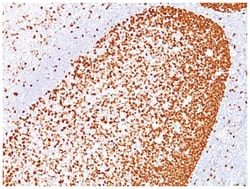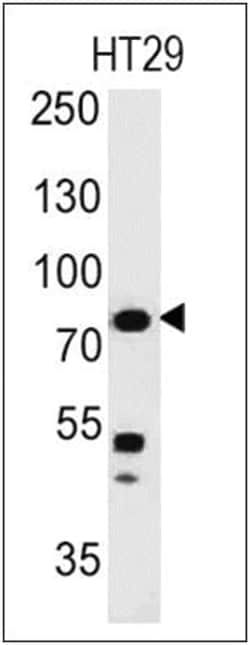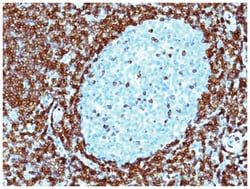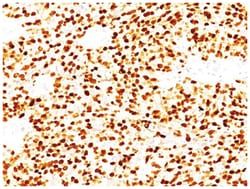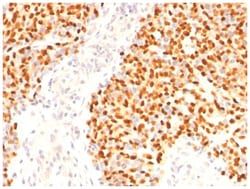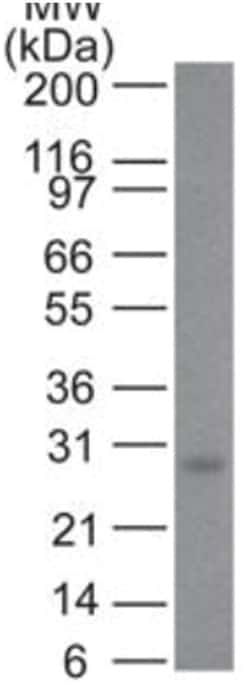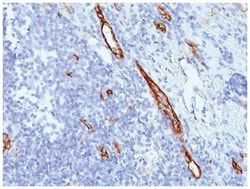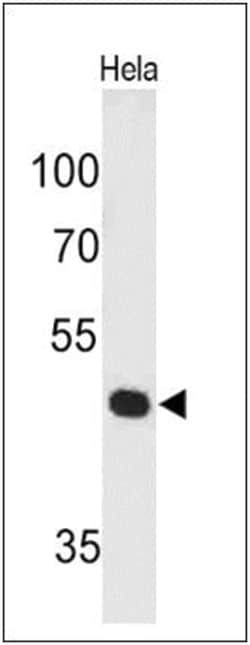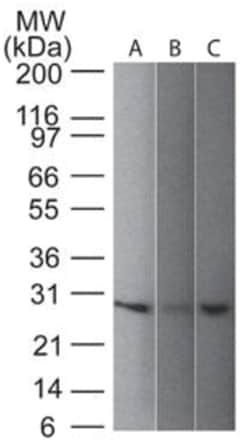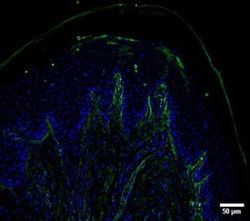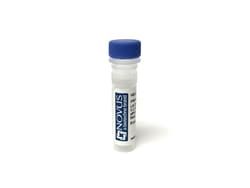Pax7 Mouse, Clone: PAX7/497, Novus Biologicals™
Mouse Monoclonal Antibody has been used in 4 publications
Manufacturer: Fischer Scientific
The price for this product is unavailable. Please request a quote
Antigen
Pax7
Dilution
Western Blot 0.5-1ug/ml, Flow Cytometry 0.5-1ug/million cells, Immunocytochemistry/Immunofluorescence 0.5-1ug/ml
Classification
Monoclonal
Form
Purified
Regulatory Status
RUO
Target Species
Human, Mouse, Rat, Chicken, Zebrafish
Gene Accession No.
P23759
Gene ID (Entrez)
5081
Immunogen
Recombinant fragment (aa300-600) of human PAX7 protein
Primary or Secondary
Primary
Content And Storage
Store at 4C.
Molecular Weight of Antigen
57 kDa
Clone
PAX7/497
Applications
Western Blot, Flow Cytometry, Immunocytochemistry, Immunofluorescence
Conjugate
Unconjugated
Host Species
Mouse
Research Discipline
Apoptosis, Mesenchymal Stem Cell Markers, Stem Cell Markers
Formulation
PBS with 0.05% BSA. with 0.05% Sodium Azide
Gene Alias
FLJ37460, HuP1, paired box 7, paired box gene 7, paired box homeotic gene 7, paired box protein Pax-7, paired domain gene 7, PAX7 transcriptional factor, PAX7B, RMS2
Gene Symbols
PAX7
Isotype
IgG1 κ
Purification Method
Protein A purified
Test Specificity
The Pax gene family of nuclear transcription factors is comprised of nine members that function during embryogenesis to regulate the temporal and position-dependent differentiation of cells. In addition, the family is involved in a variety of signal transduction pathways in the adult organism. Mutations in the Pax family of proteins have been linked to disease and cancer in humans. Pax-7 is a protein specifically expressed in cultured satellite cell-derived myoblasts. In situ hybridization reveals that Pax-7 is also expressed in satellite cells residing in adult muscle. A chromosomal aberration in the gene encoding Pax-7 causes rhabdomyosarcoma 2 (RMS2) (also called alveolar rhabdomyosarcoma).
Description
- Pax7 Monoclonal specifically detects Pax7 in Human, Mouse, Rat, Chicken, Zebrafish samples
- It is validated for Western Blot, Flow Cytometry, Immunocytochemistry/Immunofluorescence, Immunohistochemistry-Frozen.
